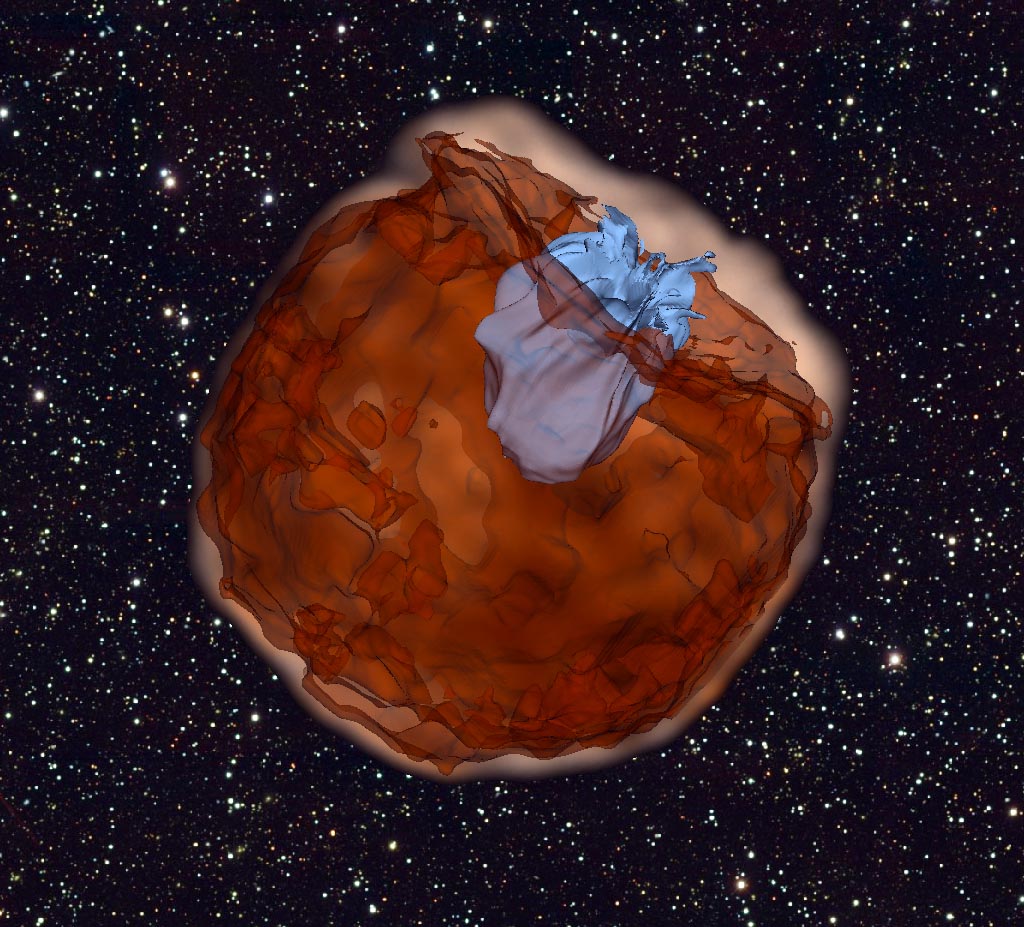Swift Special Exhibit
Supernovas
Swift has helped establish the connection between supernovas and long duration GRBs, and it is studying the relationship between stars that end their lifes as a GRB-generating supernovae and those that end in ordinary supernovae. Swift discovered that when the mildly-relativistic supernova shockwave breaks out from the star it produces a short pulse of X-rays. The observed X-ray pulse provided a precise "time stamp" for the explosion and provides an estimate of the star's radius just as it explodes.

This computer simulation shows the debris of a Type Ia supernova (brown) slamming into its companion star (blue) at tens of millions of miles per hour. The interaction produces ultraviolet light that escapes as the supernova shell sweeps over the companion, a signal detected by Swift. (Image credit: UC Berkeley, Daniel Kasen)
Swift observations of hundreds of supernovas sample the rest-frame UV/X-ray emission. Observations with Swift's UVOT provide a unique tool to study the variations of UV-optical color within the group of Type Ia SNe that are used to measure cosmological distances.
Published: September 2016
Text Reviewed: September 2018


